I’ve made some good progress this month. Beyond the Chiron Gate can now consistently be completed, and a complete playthrough of the game is taking the shape that I want. I’ve spent a lot of time this month playing through the game and then adding and changing content to get the overall game progression to be more fun (and fixing bugs that stop the game from being completed).
Here are some specific changes I’ve made:
Upgrade list
The upgrade list is now sorted into categories, rather than by data type.
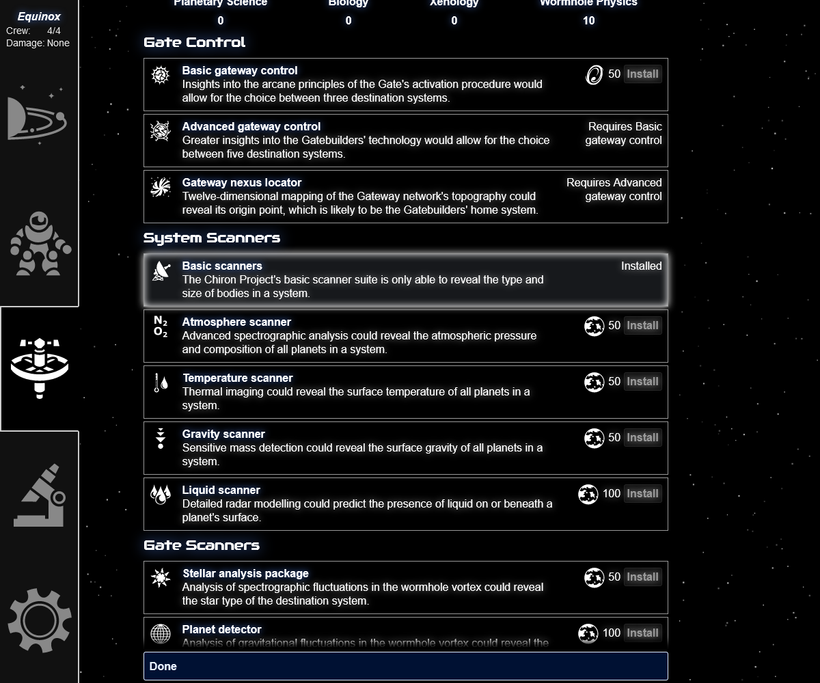
The “Gate Control” section at the top also acts as a measure of your progress through the whole game. Your ultimate objective is to find the Gatebuilders, and it’s now clear that you do that by researching the three Gate Control upgrades in order (which in turn means collecting lots of Wormhole data).
Upgrades that require you to research other upgrades first (like the advanced Gate Control ones) are now visible from the start, but upgrades that are unlocked by an event (like armoured spacesuits) aren’t.
One of the balancing changes I’ve made was to make events that unlock upgrades more common, so e.g. if you keep visiting very hot planets you can be fairly confident of getting a chance to research the enhanced suit cooling upgrade before too long.
I keep going back and forth over which upgrades should be available from the start and which require events to unlock. This is something I can easily change as I playtest.
Gate scanners and system list
I’ve reworked the system list to use icons like the planet list, rather than just text. I’ve also added new Gate scanners which you can buy to progressively reveal more about the systems you might want to visit.
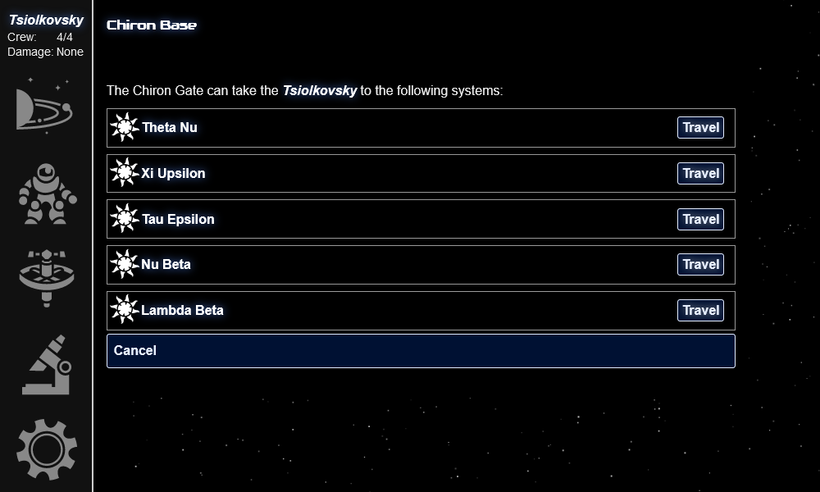

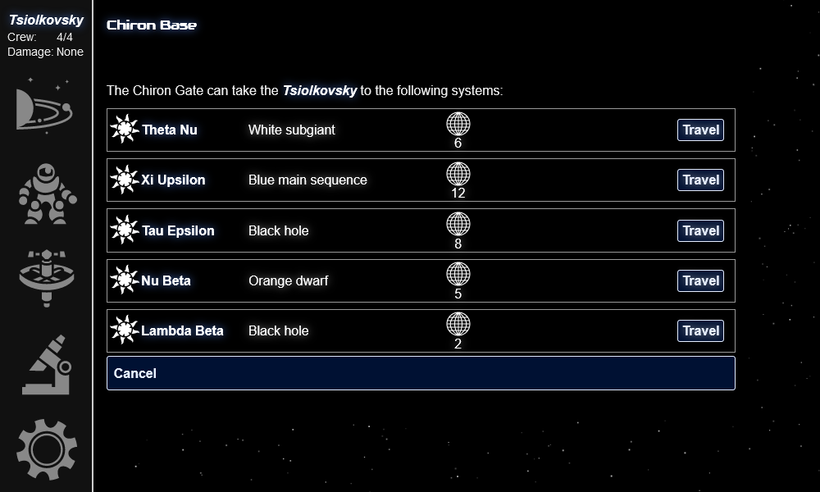

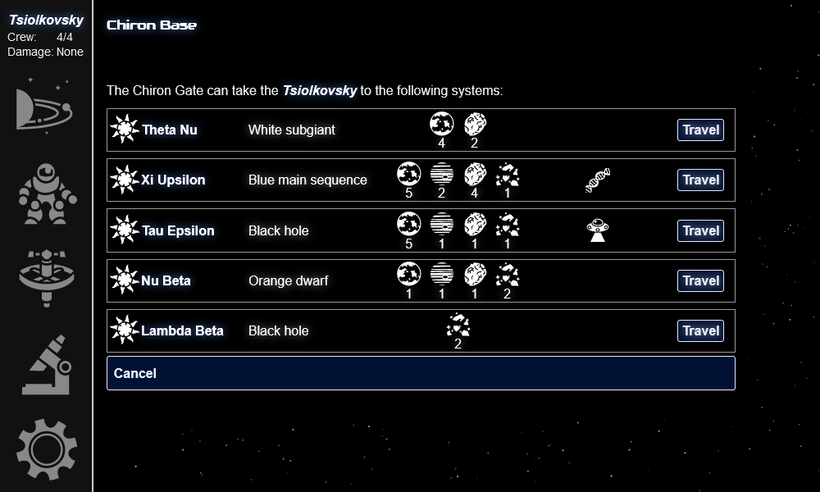
Individual scanners reveal star type, number of planets, type of planets, system hazards, and the presence of life, alien interference, etc. You have to research the planet number upgrade before the planet type one, but otherwise you can get them in any order.
Knowing more about the systems is kind of pointless until you’ve researched basic gate control, but you should also now be able to find enough Wormhole Physics data to buy basic gate control earlier in the game.
I eventually want to put in different icons for different star types (along with a bunch of other icon changes).
Star types
One of the first things I put in the game was a range of different star types, but until now the type of a star has had no effect on its planets. Not any more! Larger stars will now tend to have more and larger planets, and hotter stars will tend to have more planets in the hot zones and fewer in the cold. Yellow stars like our sun are your best bet for finding planets in the liquid-water zone. This orange subgiant star is larger but cooler than the sun, so it has a lot of planets but most of them are cold.
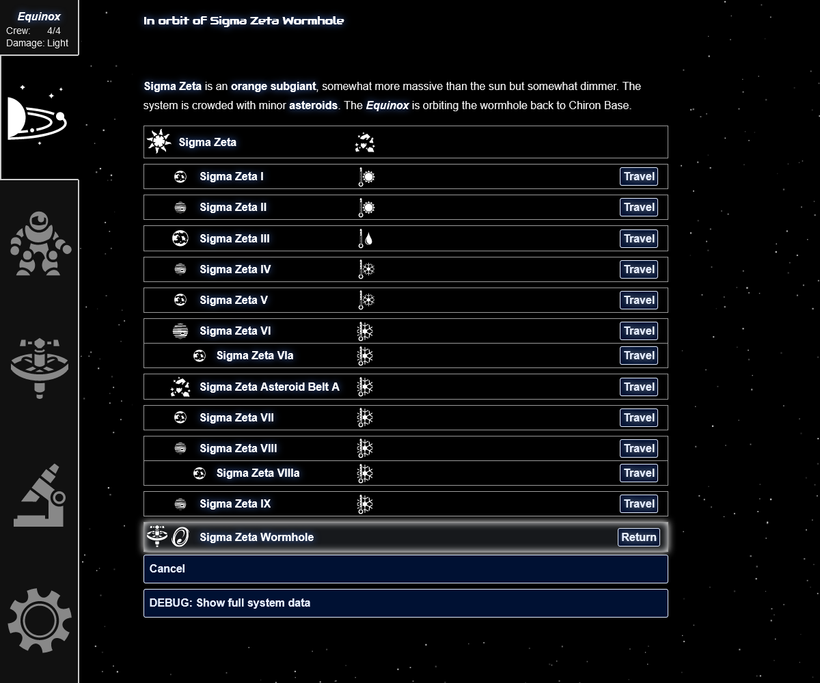
Also this month I’ve added black holes and nebulae. Black holes are always cold, almost always surrounded by an accretion disc (which the game treats as a special kind of asteroid belt), and more likely to have gravitational anomalies (which are another thing I’ve added this month). Nebulae currently don’t do much, although they’re more likely to be home to space-dwelling life forms which feed off of nebular gas (another new thing I’ve added this month).

It seems to be a tradition in games that nebulae interfere with ships’ sensors (based, I assume, on the nebula in Star Trek II: The Wrath of Khan). I don’t know whether or not I want to do that in my game, since nebular gas is pretty thin and probably wouldn’t actually interfere with scanners, and also because I don’t know if disabling your scanners would be a fun game mechanic. In any case, I’m going to add black hole and nebula based events which will trigger in these systems; maybe an event about a one-off sensor malfunction would satisfy people’s expectations.
Gravitational anomalies
Gravitational anomalies are a new kind of thing you can discover which give Wormhole Physics data (previously the only sources of it were alien ships and events inside the wormhole). They’re very rare, although you can eventually buy a scanner to spot which planets have them. They’re also more common in black hole systems.
Like many of the things I’ve added this month, they currently only have placeholder text. But the idea is that if a planet is unusually light, dense, or unstable, it might be because weird things are happening to its mass.
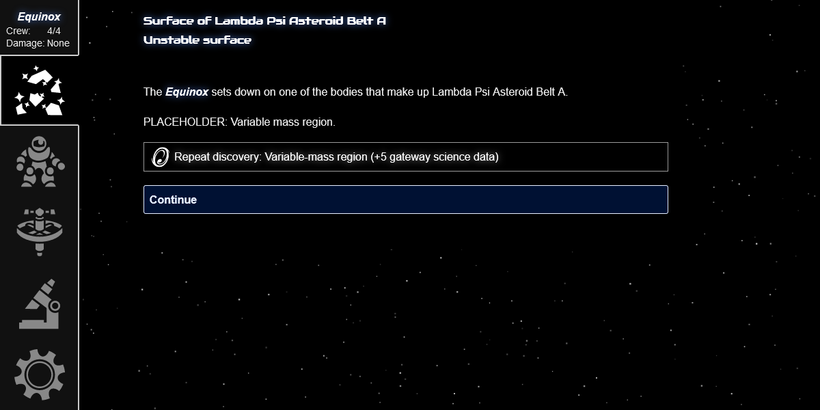
Are these anomalies natural, or are they a side-effect of the Gatebuilders’ creation of the Gate network? You’ll have to play the game to find out. (Also I haven’t decided yet.)
Another thing you can see in the screenshot above is that repeat discoveries are now usually worth 5 data rather than just 1.
Crew skill level data bonus
Every time you make a discovery (whether for the first time or not), you now get a data bonus based on the level of your highest-level explorer with the corresponding class. This ring system would be worth 5 points but I had a level 1 Planetary Scientist on the crew.
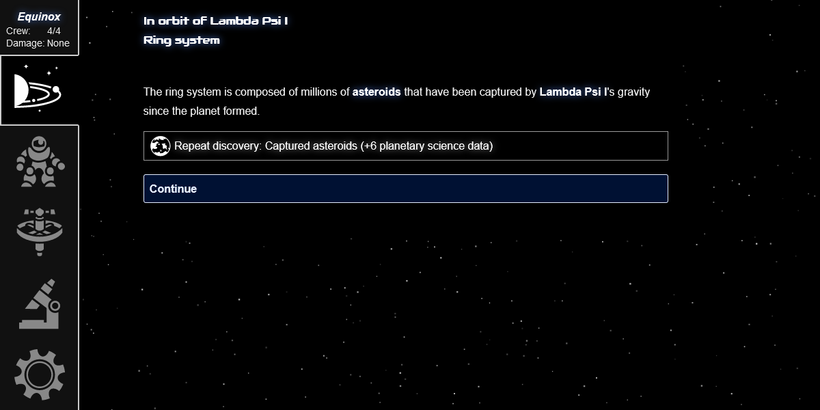
Since there’s no crew class that corresponds to Wormhole Physics data, you can never get bonus data of that type.
I wanted to make higher-level crew members feel more valuable (and therefore a bigger deal when they die), and I think the change achieves that. I’ve also rebalanced the rate at which crew members gain XP, and added an ultimate level cap of 10. (In practice I usually complete a game before any explorer gets to level 10.)
Limited Gate uses
Something I’ve been concerned about for a while is that the game had no penalty for returning to base as soon as anything went slightly wrong, which meant that the most optimal play style was a very risk-averse one. I’ve attempted to fix that by giving the Chiron Gate a limited number of uses before it collapses and the game ends.
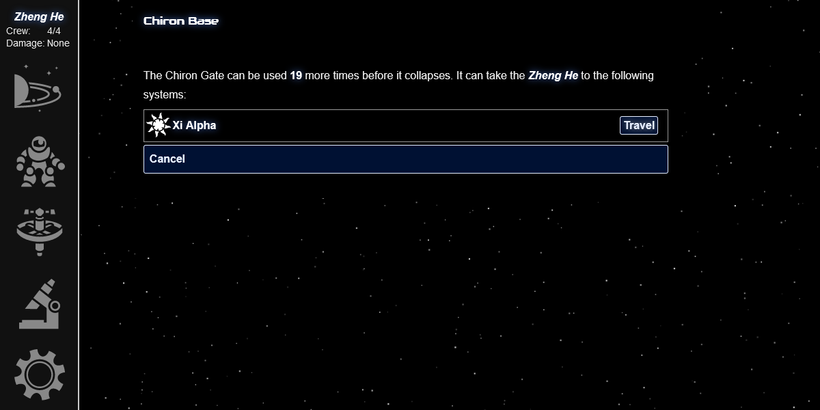
As well as their main use of giving you more systems to choose from, the Gate Control upgrades also give you extra uses of the Gate.
If you win the game and continue in sandbox mode, this restriction is removed and you can use the Gate as many times as you like.
Final score
Finally, this month I decided to drop the final score calculation and just have the final score = the amount of data collected. The score penalties I was using led to a completed game sometimes having a negative score, and having an overall time limit on the game makes the penalty for the number of systems you’ve visited less necessary. But here’s what the final score screen looks like when you win:
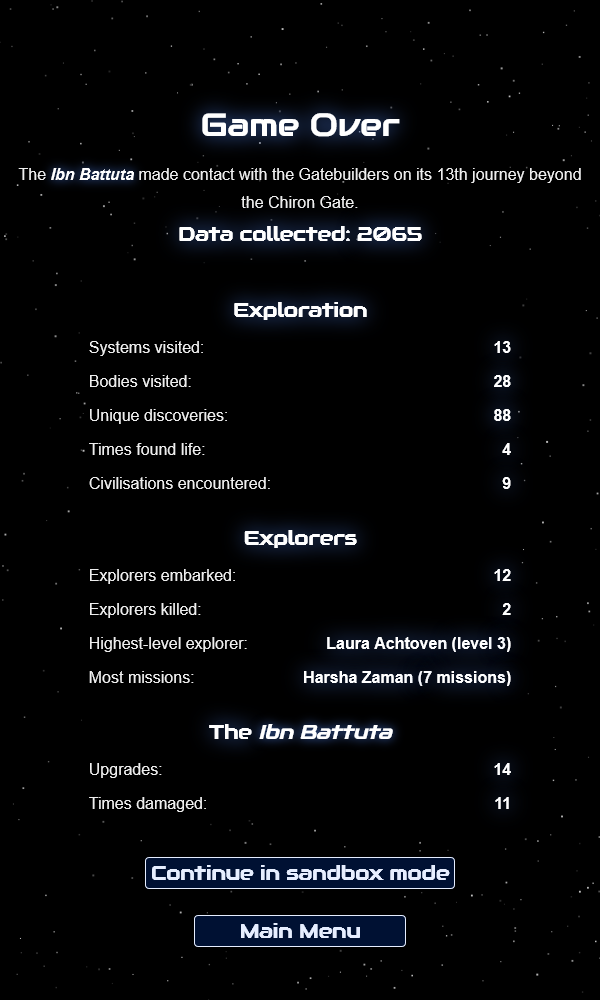
That’s it for this month. There are still a few mechanical changes I’m thinking about, but the biggest task before me now is just adding more stuff, so I’ll be back to show you some of that stuff next month.
